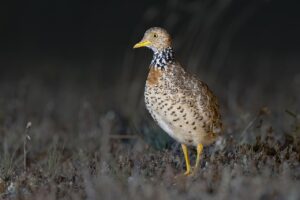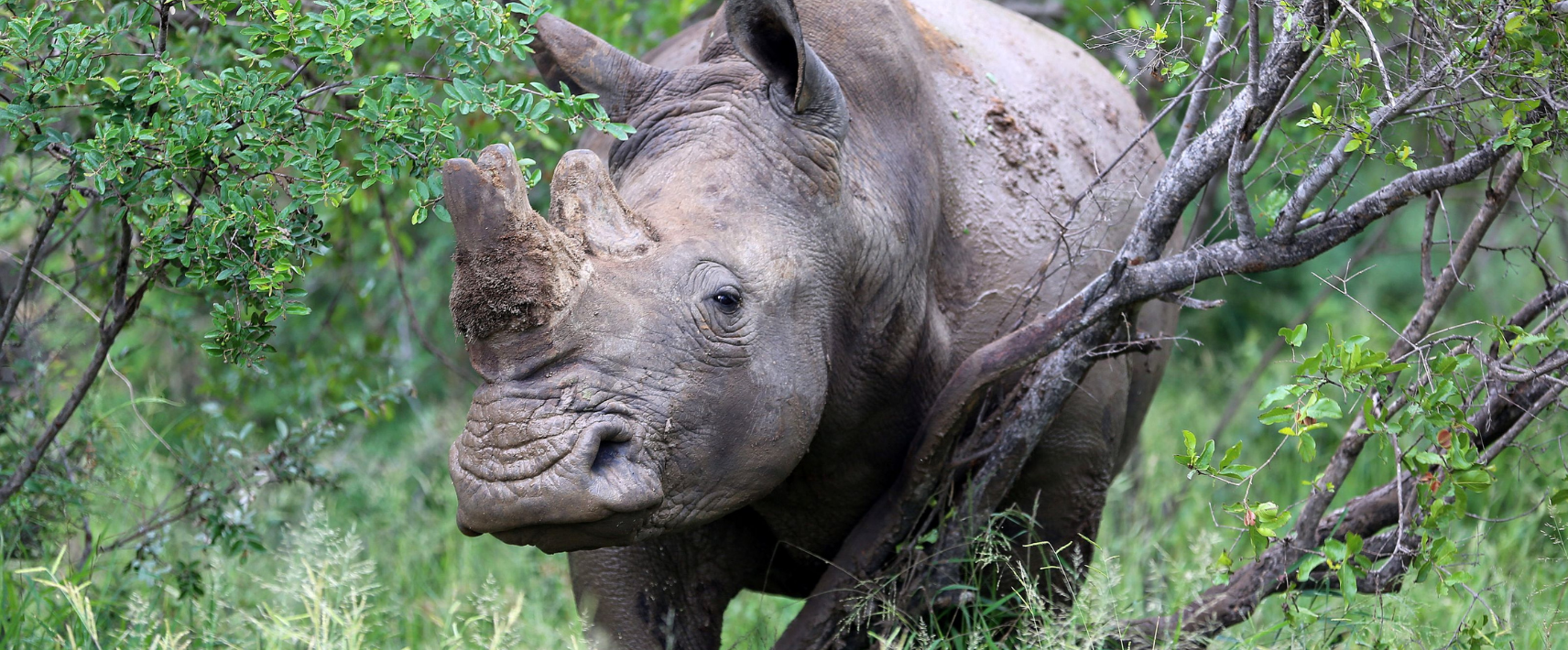One of the most important global meetings on wildlife trade has just wrapped up in Uzbekistan. It’s capital city Samarkand was where governments convened for the 20th Conference of the Parties (CoP20) to the Convention on International Trade in Endangered Species of Wild Fauna and Flora (CITES) to decide how international trade should be managed for some of the world’s most threatened...
The ‘Goldilocks bird’
 Plains-wanderer
Plains-wanderer
Photo credits:
The plains-wanderer (Pedionomus torquatus) is a unique and enigmatic native Australian bird. As the only species of the ‘Pedionomidae’ family, despite its quail-like appearance, these birds are believed to be more closely related to a group of South American shorebirds.
Standing 15–19cm tall, with a slender neck, yellow beak and long legs, plains-wanderers have mostly fawn-coloured plumage decorated with fine black swirls on their upperparts and black crescents on their underparts. Females have a rufous bib with a black and white diamond collar while males are comparatively plainer and more uniformly brown.
Plains-wanderers were once widely distributed throughout eastern Australian grasslands. The species have been impacted by degradation of native grasslands because of cultivation, overgrazing and introduced grasses. Unfortunately, the species is now classified as Critically Endangered in the Northern Territory, Victoria and Queensland, and Endangered in South Australia and New South Wales. In 2020 the numbers of mature plains-wanderers were estimated to be as low as 250, with strongholds located in the northern plains of Victoria and the Riverina region of New South Wales.
Nomadic wanderers
Plains-wanderers are typically solitary and nomadic. With a cryptic nature, they are rarely sighted. When moving they can be seen tiptoeing, running crouched through grass or scanning for predators over vegetation, elongating themselves by stretching their necks. As well as eating grass seeds, they forage on insects and can survive with minimal water by pecking at dew and raindrops from leaves.
The ‘Goldilocks bird’
Plains-wanderers have been nicknamed the ‘Goldilocks bird’ due to their specific habitat requirements. The fussiness of the species means the grasslands they inhabit can be neither too sparse nor too dense, they have to be “just right”. Their preferred grassland structure is 50 per cent bare ground, 40 per cent vegetation (primarily grasses, herbs and forbs less than 5cm in height, tussocks spaced 10–20cm apart and taller plants of 30cm for concealment) and 10 per cent leaf litter.
Private land conservation
While captive-breeding and release programs in zoos in Victoria and New South Wales are contributing to recovery, protecting private land is also a key to the longevity of the species. Incentives by Local Land Services and the Biodiversity Conservation Trust in New South Wales and Trust for Nature in Victoria have been assisting landholders to strike a balance between farm management and conservation. Since 2017 the ‘Paddocks for Plains wanderer project’ in the New South Wales Riverina region has assisted 30 landholders in managing nearly 16,000 hectares of primary habitat through strategic grazing and pest control. By managing paddocks and grazing practices, the removal of weeds, invasive animal management and construction of fenced exclusion zones landholders can establish suitable habitat for plains-wanderers. Conservation covenants can also help to protect plains-wanderer habitat for the long term, even after the current landholder ceases to own the land.
Contribution assistance from Shanna Rogers, Senior Land Services Officer, Murray Local Land Services


